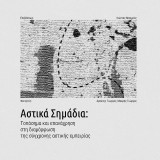Supervisor:
2024
Landmarks have always been reference points within a city. They are living remnants of the cultural heritage and history of a place, and are usually of great importance to the local economy. They are a form of embodiment of the identity of art, contribute to the socialisation part and help to promote the area. As such, as spaces they shape the contemporary urban experience. It is therefore important to preserve these important structures. The architecture of re-use can help in this preservation.
The aim of the research is to analyse, through examples, the influence of landmarks on society and the role that reuse has played in their preservation. This is done through the historical analysis of six different landmarks that have been reused over time. This journey starts from the Santa caterina market in Barcelona and how it affects the city's economy, then to the Kipseli market and the role it now plays in the socialisation of the inhabitants of the area. The research continues with the White Tower in Thessaloniki and the Koursoum mosque in Trikala, which are pieces of the cultural heritage and history of their regions. Then to the old electric theatre of Volos and the impetus it gave to art. And concludes with New York's High Line Park and its importance in the promotion of the region and its daily functioning.
For the implementation of this research, a study of historical and architectural books, archives of local authorities and analysis of sources was carried out. Furthermore, a visit to some of the landmarks and a discussion with local community residents.
